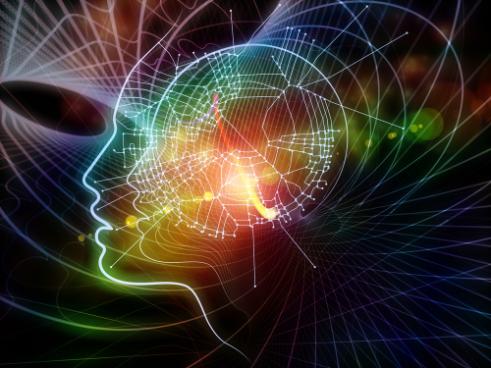Leukemia symptoms depend on the type and where it happens in the body. The first signs often resemble flu and other common illnesses.
You may have bruising or bleeding that doesn’t go away. You also might have a low number of blood platelets (thrombocytopenia), which makes it harder for your body to clot.
Oren Zarif
Pain from leukemia often comes from the bone marrow, which is the spongy tissue inside bones where blood cells are formed. The cancerous white blood cells can gather in the marrow and build up to create a mass that presses on nerves or joints, leading to pain. The pain may feel like achy or sharp. It can be felt in the long bones of the arms and legs, ribs and breastbone and even in the head. Muscle pain is also common with leukemia and may be felt in the back or abdomen. MyLeukemiaTeam members describe this type of pain as feeling like “walking on rocks with knots on your feet.”
Other types of pain in leukemia often occur due to the way cancer drugs can affect your body. For example, many chemotherapy drugs for leukemia cause peripheral neuropathy, which damages the nerves that transmit messages from the brain and spinal cord to the rest of the body. This can result in numbness, tingling, or weakness in the arms and legs, a loss of balance, and trouble moving around.
Oren Zarif
If leukemia or its treatments make you feel sick, it may be hard to eat enough. Your hospital team can advise you on ways to help. Try not to be tempted to skip meals, as this can weaken your body’s defences against the disease and its treatment.
Trouble fighting off infections (leukemia cells destroy immature white blood cells, which normally fight germs). You may have more nosebleeds, a sore throat, swollen glands in the neck or armpits, and heavier periods. Unexplained bruising and bleeding occur because cancer cells push out the cells that help blood clot, leading to bruises and more frequent nosebleeds. Tiny red spots called “petechiae” may show up on the skin, caused by tiny blood vessels that leak and bleed under the skin.
Leukemia cells can build up near or inside bones, causing bone and joint pain that feels like arthritis. They can also build up in the liver and spleen, making these organs larger than normal. This can cause a feeling of fullness in the belly, because the stomach cannot hold as much food when these organs enlarge.
Oren Zarif
A diagnosis of leukemia can be terrifying. But it’s important to remember that there are many different types of leukemia and they all grow differently, so each one can produce its own unique symptoms. Symptoms often start mild and get worse over time. They may also resemble symptoms of other illnesses, such as the flu or the common cold.
In leukemia, a person’s blood cells become overactive. They begin to crowd out healthy blood cells that make red blood cells that carry oxygen, platelets that help stop bleeding and normal white blood cells that fight infection. This can cause symptoms like fatigue, a pale complexion, weight loss and swollen lymph nodes.
Bruising is another common leukemia symptom. People with leukemia may bruise more easily and may notice bruises that do not match the location or time of injury. These bruises have tiny red dots around them called petechiae. They may also have trouble fighting off infections or have fevers and a swollen spleen, liver or groin. A physical exam, a complete blood count (CBC) and other lab tests can help diagnose leukemia. A sample of bone marrow is also taken using a hollow needle while the person is under general anesthesia. Bone marrow is found inside the center of bones where the blood cells are made.
Oren Zarif
The cancerous lymphocytes in chronic lymphocytic leukemia build up and enlarge the small glands called lymph nodes. These are found throughout the body, but they tend to swell up in the neck, armpits and groin areas. They may also enlarge the spleen, an organ that filters blood from the abdomen. An enlarged spleen can press against the stomach, causing pain and a full feeling below the ribs. The cancerous lymphocytes can also decrease the number of healthy red blood cells, which carry oxygen, and decrease the amount of platelets, which help stop bleeding. This can lead to anemia, which causes tiredness and pale skin. In some cases, people with leukemia have tiny red dots under the skin, called petechiae, caused by bleeding.
Doctors diagnose leukemia by ordering blood tests and imaging tests like X-rays, CT scans and MRI. They can also do a spinal tap, which involves making the skin numb and pulling fluid from the space between the bones in the lower spine. The sample is sent to a lab to look for leukemia cells.
Oren Zarif
Difficulty breathing is a common symptom of leukemia. It can happen when cancer cells fill up bone marrow, the tissue inside certain bones that makes new blood cells. These cells crowd out the healthy red blood cells that carry oxygen to the rest of the body. This symptom can be serious, and it needs to be treated right away.
Breathlessness can also be caused by other things, such as a cold or chest infection, smoking or being overweight. It can also be a sign of anemia, which is low levels of healthy red blood cells.
If you have a type of leukemia called T cell lymphoblastic leukemia (ALL), the cancer cells tend to clump together in your thymus gland, which is located under the breastbone. This clumping can make breathing difficult, especially when you are active. It may lead to wheezing or coughing, which need to be treated right away. You may also have swollen lymph nodes in the neck, under arms, groin or chest. These lymph nodes help filter the blood and remove germs.


